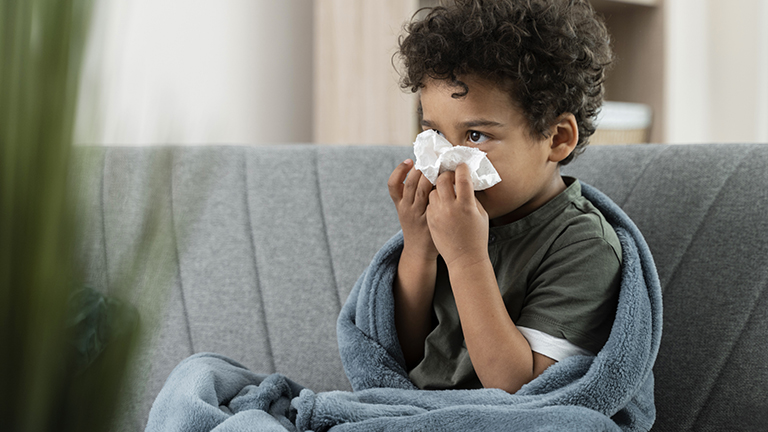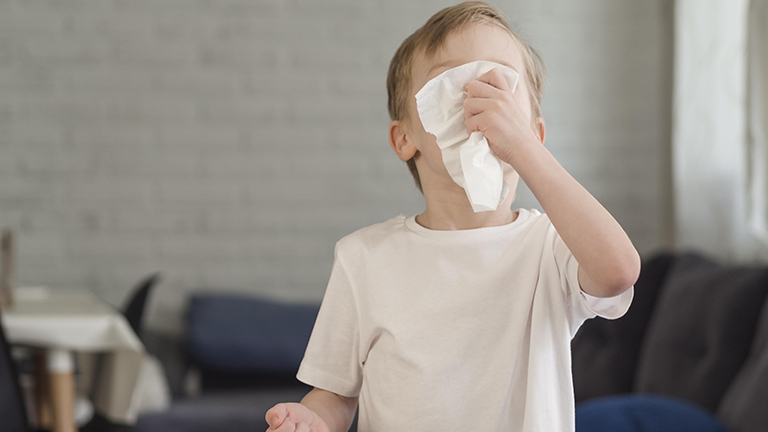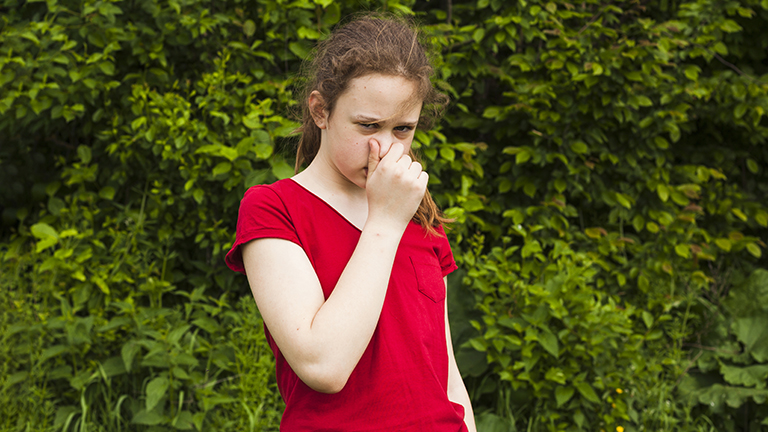Childhood allergies are increasingly common and can affect children of all ages. Understanding childhood allergy symptoms is crucial for early intervention and effective management. Allergies occur when a child’s immune system overreacts to substances that are typically harmless. These substances, known as allergens, can include foods, pollen, dust mites, animal dander, or even certain medications.
Children are more prone to allergies due to the development of their immune system and frequent exposure to new environments. Detecting allergies early can prevent severe complications such as asthma, eczema, or anaphylaxis. In this article, we will discuss the various symptoms, causes, types, and management strategies for childhood allergies.
Common Symptoms of Childhood Allergies
Childhood allergies can manifest in various ways, affecting the respiratory system, skin, eyes, and digestive tract. Common signs of allergies in children include sneezing, nasal congestion, runny nose, and coughing, often linked to seasonal or environmental allergens. Skin reactions such as rashes, hives, or eczema are frequent indicators, especially from food allergies. Gastrointestinal symptoms like vomiting, diarrhea, or stomach pain may appear after consuming allergenic foods. Eye-related symptoms include redness, itching, and watery eyes. Early recognition of these symptoms is crucial for timely diagnosis and effective management, preventing complications like asthma or severe allergic reactions.
Respiratory Symptoms: Sneezing, Coughing, and Wheezing
Respiratory symptoms are among the most common childhood allergy symptoms. Children may experience frequent sneezing, nasal congestion, runny nose, and wheezing. Seasonal allergies, also known as hay fever, can cause repeated bouts of these symptoms, often coinciding with pollen seasons.
Persistent coughing or difficulty breathing may indicate allergic asthma. If your child is experiencing wheezing, it is important to consult a paediatrician or allergy specialist for diagnosis and treatment.
Skin Symptoms: Rashes, Eczema, and Hives
Skin reactions are another visible sign of allergies in children. Conditions like eczema and hives are often triggered by food allergens, environmental allergens, or insect bites. Hives appear as raised, red, itchy welts, while eczema causes chronic itching and inflammation.
Parents should monitor any sudden skin changes, especially after introducing new foods or exposing their child to potential allergens like pets or pollen.
Gastrointestinal Symptoms: Vomiting, Diarrhea, and Stomach Pain
Food allergies in children often manifest as gastrointestinal symptoms. Common triggers include milk, eggs, peanuts, tree nuts, and shellfish. Symptoms may include nausea, vomiting, diarrhea, and stomach pain shortly after consuming the allergen.
It is important to differentiate between mild food intolerance and severe allergic reactions, which can lead to life-threatening conditions like anaphylaxis.
Eye Symptoms: Itchy, Watery, or Red Eyes
Allergies in children often affect the eyes, causing discomfort and irritation. Common eye symptoms in childhood allergies include redness, itching, swelling, and excessive tearing. These symptoms frequently occur due to exposure to pollen, dust, pet dander, or mold. Children may rub their eyes constantly, which can worsen irritation and increase the risk of infection. Seasonal allergies, also known as hay fever, commonly trigger these eye reactions. Early recognition and proper management, including avoiding allergens and using paediatric-safe antihistamine eye drops when recommended, can help relieve discomfort and prevent further complications.
Types of Childhood Allergies
Understanding the different types of allergies can help parents identify potential triggers and seek appropriate treatment.
Food Allergies
Food allergies are among the most common childhood allergies. The most frequent triggers include:
- Peanuts
- Tree nuts
- Milk
- Eggs
- Shellfish
Food allergies can lead to symptoms ranging from mild rashes to severe allergic reactions in children, including anaphylaxis. Parents should always read food labels carefully and educate caregivers about potential allergens.
Seasonal or Environmental Allergies
Seasonal or environmental allergies are common in children and are triggered by allergens such as pollen, dust mites, mold, and pet dander. These childhood allergy symptoms often include sneezing, nasal congestion, runny nose, itchy eyes, and fatigue. Symptoms may flare during specific times of the year, such as spring and fall, when pollen counts are high. Environmental factors like poor air quality or mold in the home can also worsen reactions. Managing exposure, using air purifiers, and consulting a paediatrician for antihistamines or other treatments can help children stay comfortable and reduce the impact of these allergies.
Drug Allergies
Drug allergies occur when a child’s immune system reacts abnormally to certain medications, most commonly antibiotics like penicillin. Childhood allergy symptoms from drug reactions can range from mild rashes, hives, and itching to more severe reactions, including swelling, difficulty breathing, or anaphylaxis. Symptoms may appear immediately after taking the medication or several hours later. Early recognition is critical to prevent serious complications. Parents should inform healthcare providers about any known drug allergies and carefully monitor children when starting new medications. In severe cases, emergency treatment with epinephrine may be required to save a child’s life.
Pet Allergies
Pet allergies are common among children and are triggered by proteins found in an animal’s skin cells, saliva, or dander. Childhood allergy symptoms from pets often include sneezing, nasal congestion, itchy or watery eyes, coughing, and skin rashes. Some children may also experience asthma flare-ups when exposed to pets. Symptoms can occur immediately or develop over time with repeated exposure. Managing pet allergies involves minimising contact, keeping pets out of bedrooms, regular cleaning, and using HEPA air filters. In severe cases, paediatricians may recommend antihistamines or other medications to help control symptoms and improve the child’s comfort.
Causes and Triggers of Allergies in Children
Childhood allergies are caused by an overactive immune system reacting to harmless substances. Common triggers include pollen, dust mites, mold, pet dander, certain foods, and medications. Genetic factors, environmental exposures, and lifestyle habits can increase susceptibility, making some children more prone to developing allergic reactions.
Genetic Factors
Genetics play a significant role in childhood allergies. Children with a family history of asthma, eczema, or other allergic conditions are more likely to develop similar allergy symptoms. Inherited immune system tendencies can make children more sensitive to allergens, increasing the likelihood of reactions to foods, pollen, or environmental triggers.
Environmental Triggers
Environmental factors can trigger childhood allergy symptoms, including pollen, dust mites, mold, smoke, and pet dander. Exposure to polluted air or damp, moldy environments can worsen respiratory and skin reactions. Minimising contact with these triggers through cleaning, air filtration, and careful monitoring can help reduce allergy flare-ups in children.
Lifestyle and Dietary Influences
A child’s lifestyle and diet can impact allergy development. Poor nutrition, lack of exposure to diverse foods, and high sugar or processed diets may increase sensitivity. Early introduction of allergenic foods under guidance and maintaining a balanced, healthy diet can help support the immune system and reduce childhood allergy symptoms.
Diagnosis and Allergy Testing for Kids
Accurate diagnosis is key to managing childhood allergies. Paediatricians use methods such as skin prick tests, blood tests, and elimination diets to identify triggers. Early detection of childhood allergy symptoms allows for targeted treatment, effective management, and prevention of severe reactions, ensuring children’s health and well-being.
Skin Prick Test
The skin prick test is a common method to identify childhood allergy symptoms. Small amounts of suspected allergens are applied to the child’s skin, which is then lightly pricked. A reaction, such as redness or a raised bump, indicates sensitivity, helping doctors pinpoint specific triggers for effective management.
Blood Tests
Blood tests are a reliable method to diagnose childhood allergy symptoms, especially when skin tests are not feasible. These tests measure the presence of specific antibodies (IgE) that the immune system produces in response to allergens. Common blood tests, such as the ImmunoCAP test, can identify sensitivities to foods, environmental triggers, or medications. Blood tests are particularly useful for children with skin conditions like eczema, or those taking medications that interfere with skin testing. Early detection through blood testing allows healthcare providers to develop personalised management plans, reduce exposure to allergens, and prevent severe allergic reactions.
Elimination Diets
Elimination diets help identify food-related childhood allergy symptoms. This method involves removing suspected allergenic foods from a child’s diet for a set period and gradually reintroducing them under medical supervision. Observing reactions during this process helps pinpoint specific triggers. Common allergens include milk, eggs, peanuts, and shellfish. Proper guidance from a paediatrician or dietitian ensures nutritional needs are met while accurately diagnosing food allergies.
Treatment and Management Options
Managing childhood allergies involves a combination of medications, lifestyle adjustments, and preventive strategies.
Medications for Childhood Allergies
- Antihistamines: Reduce sneezing, itching, and rashes
- Nasal corticosteroids: Help manage congestion and inflammation
- Bronchodilators: Used for allergic asthma
- Epinephrine auto-injectors: Essential for severe allergic reactions
Immunotherapy (Allergy Shots)
Immunotherapy, or allergy shots, gradually desensitises children to specific allergens, reducing childhood allergy symptoms over time. Small, controlled doses of allergens are administered regularly, allowing the immune system to build tolerance. This treatment is especially effective for environmental allergies like pollen, dust mites, or pet dander. Immunotherapy can decrease the frequency and severity of allergic reactions, improve quality of life, and may provide long-term relief when combined with avoidance strategies.
Home Remedies and Lifestyle Changes
- Regular cleaning to reduce dust and mold
- Using air purifiers
- Limiting outdoor exposure during high pollen seasons
- Maintaining a healthy diet rich in fruits, vegetables, and probiotics
Prevention Tips for Childhood Allergies
Preventing childhood allergies involves minimising exposure to known allergens and supporting a healthy immune system. Regular cleaning, using HEPA filters, and keeping pets out of bedrooms can reduce dust, dander, and mold. Introducing allergenic foods gradually under medical guidance may lower the risk of food allergies. Maintaining a balanced diet rich in vitamins and probiotics helps strengthen immunity. Informing schools and caregivers about your child’s allergies ensures quick action during exposure. By combining environmental control, dietary strategies, and awareness, parents can significantly reduce the frequency and severity of childhood allergy symptoms.
Reducing Exposure to Allergens
- Keep windows closed during high pollen seasons
- Wash bedding and toys regularly
- Use hypoallergenic bedding and furniture
Healthy Diet and Immune Support
A balanced diet that includes vitamins C, D, and omega-3 fatty acids can support the immune system. Introducing allergenic foods gradually may also reduce the risk of developing severe food allergies.
Preparing Schools and Daycares
Inform teachers and caregivers about your child’s allergies. Provide action plans for emergency allergic reactions in children, including instructions on using epinephrine auto-injectors.
When to Seek Immediate Medical Attention
Recognising severe symptoms is critical. Seek urgent medical care if your child shows:
- Difficulty breathing or wheezing
- Swelling of lips, tongue, or throat
- Severe vomiting or diarrhea
- Signs of anaphylaxis
Having an emergency action plan and keeping epinephrine on hand can be life-saving.
Expert Opinion
Dr. Sarah Thompson, a paediatric allergist with over 15 years of experience, emphasises that early detection is key in managing childhood allergies. “Parents should be vigilant for persistent symptoms like sneezing, rashes, or gastrointestinal issues. Timely allergy testing and personalised management plans can prevent severe reactions and improve a child’s quality of life,” she explains. Dr. Thompson also highlights the importance of educating schools and caregivers about a child’s allergies, as well as implementing preventive strategies at home to reduce exposure to common allergens.
Conclusion and Key Takeaways
Childhood allergies are common but manageable with early recognition, proper diagnosis, and consistent management. Parents should watch for childhood allergy symptoms such as respiratory issues, skin reactions, gastrointestinal problems, and eye irritation. Identifying triggers through testing, maintaining preventive measures, and following medical advice can significantly reduce allergic reactions. Treatments like medications, immunotherapy, and lifestyle adjustments improve quality of life. Educating caregivers, schools, and children themselves ensures timely response to reactions. With vigilance, guidance, and proactive strategies, children with allergies can lead healthy, active lives while minimising risks and discomfort associated with allergic conditions.



